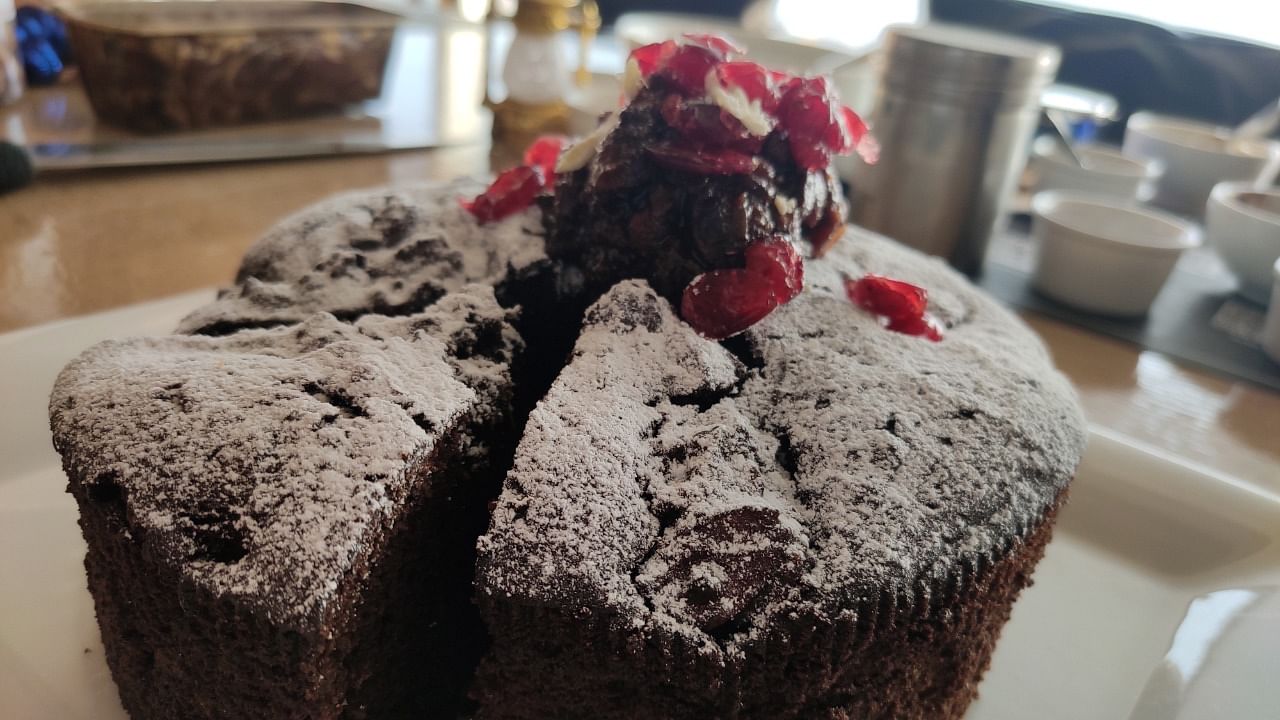
For the world, it may not be that great a holiday treat, but for us, this ancient Roman innovation is everything that Christmas stands for — the cheer, the spirit and the celebration. In fact, it has been our first and perhaps the best association with the festival, and for good reason too. The fruitcake, a treat widely known in the West, arrived in India in the earlier years of the East India Company.
Given the cake’s denaturalised characteristics — back in the day nuts and spirits were used rather than candied fruit of today, which gave it a better shelf life and pared down the possibility of spoilage — often blocks of the cakes would arrive in the Dak Bungalow as part of the ration carried by the wives making a voyage to meet their merchant husbands. In a way, it followed the same pattern as was in Rome, where the fruitcake was the first curator more as this delicious bread sweetened from dry fruits and nuts during winters — and became popular as this nourishing nosh that when paired with wine or beer could literally throw a party in your mouth. A staple of the European culture where winters meant less food, the fruitcake began globetrotting with the advent of the crusaders. The constant need to raise money and new weapons ensured that the crusaders travelled far and wide and with them took the fruit bread, which became the muse for Italian sweet-and-spicy Panforte (more of bread) and the German — both of which are today a part of the Christmas table, worldwide.
A winter treat
In India, however, fruitcake arrived much later with the East India Company. By this time the cake which had started as this satiating, nourishing winter treat — where most snow-capped places left little to do — had now evolved into something more gourmet.
To begin with, instead of getting its sweetness from raisins, sugar — thanks to the Tudor — had become a part of the recipe and along with that had come in candied fruit that had a longer shelf life than the fruit and helped make the cake richer. That, along with spirit made fruitcake better tasting — even gourmet. Such was the effect of the transformation that through the 18th and 19th-century fruitcake took centre stage — both as a holiday special and occasion highlight. It was also the era that fruitcake travelled to Asia and other regions of the world, partly trade, and mostly colonisation. But even when it reached new regions, fruitcake remained the privy of the powers-to-be, thanks to one particular historical event that catapulted fruitcake to the top of the cake game. The event was the wedding of Queen Victoria and Albert of Saxe-Coburg and Gotha in 1840 where a 300-pound fruitcake was served to the selected guests as part of the wedding breakfast.
The story has it that Queen Victoria waited a year to taste her slice of the wedding cake. Since then, fruitcake has been a part of many weddings including that of the present queen and of Prince William and Kate.
So how did we Indians get to the fruitcake? While old notes say that the fruitcake was part of the Christmas celebration in India — and was often made for the Carol singers and the converts — food lore has it that the cake was part of the pre-meal treat along with cookies that were given to communities that took up Christianity or were part of the cantonment. Part of the regimental cookbook, it was one of the recipes that would follow the British style for a long time while its younger brethren the plum pudding gained popularity as this rich, dense dessert that in taste and flavour was more appealing to the Asian palate.
A recipe to remember
Created by one of the chefs in King Richard II’s royal kitchen, the plum cake was an offshoot of the Fygey Pudding or Figgy Pudding that propelled a new era of Christmas treats. Little is recorded as to when and how the cake became a part of the Christmas celebration. But given its balmy nature and the classic recipe that called for hard to find nuts, dry fruits and spirit, it was a given that the cake — loved for its sweet happy mouthfeel — became a part of the biggest celebration. After all, fruitcake, despite its royal elevation continued to be a treat that could be made in bulk and distributed as a symbol of happy spirit and cheer. It was that balmy, happy feeling that took British spice planter, Murdoch Brown to a small bakery owner called Mambally Bapu in the quaint town of Thalasserry in north Kerala a few days before Christmas in 1880. Brown, who had heard about Bapu and his baking skills acquired in British occupied Burma, was carrying a wedge of the fruitcake, his family recipe and an offer.
After roughly teaching Bapu the art of cake making, Brown offered to buy him all the ingredients. “Make it as close to the original” was Brown’s only request as he handed over a sundry bunch of ingredients (that included cocoa, dates, raisins, and other dry fruits) and suggested a French brandy from erstwhile Mayyazhi (now Mahe), for the cake. Four years later, Bapu presented his creation using indigenous ingredients. A delighted Briton called the richer, sweeter, fragrant version, “one of the best cakes.” With that Bapu and the Mambally Royal Biscuit not only earned a dozen more cakes but also set the precedence of the fruitcake that India would come to love.
Check out latest DH videos here